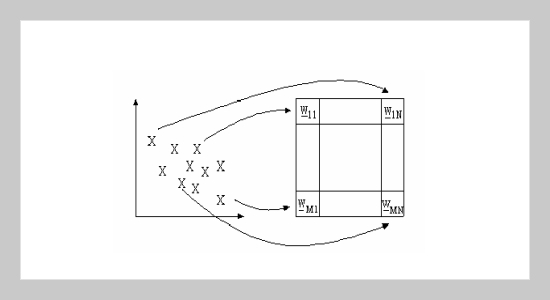REFERENCES
- [1] Baraldi, A., Blonda, P., Parmiggiani, F., Pasquariello, G. and Satalino, G., “Model Transitions in Descending FLVQ, " IEEE Trans. on Neural Networks, Vol. 9, pp. 724-738 (1998).
- [2] Fritzke, B., “Growing Cell Structures-a Self-Organizing Network for Unsupervised and Supervised Learning,” Neural Networks, Vol. 7, pp. 1441-1460 (1994).
- [3] Harp, S. A. and Samad, T., “Genetic Optimization of Self-Organizing Feature Maps,” Proc. Int. Conf. on Neural Networks, pp. 341-346, (1991).
- [4] Huang, S. J. and Hung, C. C., “Genetic Algorithms Enhanced Kohonen’s Neural Networks,” IEEE Int. Conf. on Neural Networks, pp. 708-712 (1995).
- [5] Jun, Y. P., Yoon, H. and Cho, J. W., “L Learning: a Fast Self-Organizing Feature Map Learning Algorithm Based on Incremental Ordering,” IEICE Trans. on Information & Systems, Vol. E76, pp. 698-706 (1993).
- [6] Kiang, M. Y., Kulkarni, U. R., Goul, M., Philippakis, A., Chi, R. T. and Turban, E., “Improving the Effectiveness of Self-Organizing Map Networks Using a Circular Kohonen Layer,” Proc. of the 30th Hawaii Int. Conf. on System Sciences, pp. 521-529 (1997).
- [7] Koh, J., Suk, M. and Bhandarkar, S. M., “A Multilayer Self-Organizing Feature Map for Range Image Segmentation,” Neural Networks, Vol. 8, pp. 67-86 (1995).
- [8] Kohonen, T., Self-Organization and Associative Memory, 3rd ed., Springer-Verlag, Berlin, Germany (1989).
- [9] Kohonen, T., Self-Organizing Maps, Springer-Verlag, Berlin, Germany (1995).
- [10] Kohonen, T., Self-Organizing Maps, Springer-Verlag, New York, U.S.A. (1995).
- [11] Kohonen, T., “The Self-Organizing Feature Map,” Pro. of the IEEE, Vol. 78, pp. 1464-1480 (1990).
- [12] Kohonen, T., Oja, E., Simula, O., Visa, A. and Kangas, J.,” Engineering Application of the Self-Organizing Map,” Pro. of the IEEE, Vol. 84, pp. 1358-1383 (1996).
- [13] Lo, Z. P. and Bavarian, B., “On the Rate of Convergence in Topology Preserving Neural Networks,” Biological Cybernetics, Vol. 65, pp. 55-63 (1991).
- [14] Martinetz, T. M. and Schulten, K. J., “Topology Representing Networks,” Neural Networks, Vol. 7, pp. 507-522 (1994).
- [15] McInerney, M. and Dhawan, A., “Training the Self-Organizing Feature Map Using Hybrids of Genetic and Kohonen Methods,” IEEE Int. Conf. on Neural Networks, pp. 641-644 (1994).
- [16] Ritter, H. J. and Kohonen, T., “Self-Organizing Semantic Maps,” Biological Cybernetics, Vol. 61, pp.241-254 (1989).
- [17] Samad, T. and Harp, S. A., “Self-Organization with Partial Data,” Network: Computation in Neural Systems, Vol. 3, pp. 205-212 (1992).
- [18] Su, M. C. and Chang, H. T. “Genetic-Algorithm-Based Approach to Self-Organizing Feature Map and its Application in Cluster Analysis,” IEEE Int. Joint Conf. on Neural Networks, pp. 2116-2121 (1995).
- [19] Su, M. C. and Chang, H. T., “Fast Self-Organizing Feature Map,” IEEE Trans. on Neural Networks, Vol. 13, pp. 721-733 (2000).
- [20] Tsao, E. C., Bezdek, J. C. and Pal, N. R., “Fuzzy Kohonen Clustering Network,” Pattern Recognition, Vol. 27, pp. 757-764 (1994).
- [21] Van Hulle, M. M. and Leuven, K. U., “Globally-Ordered Topology-Preserving Maps Achieved with a Learning Rule Performing Local Weight Updates Only,” IEEE Workshop of Neural Networks for Signal Processing, pp. 95-104 (1995).
















